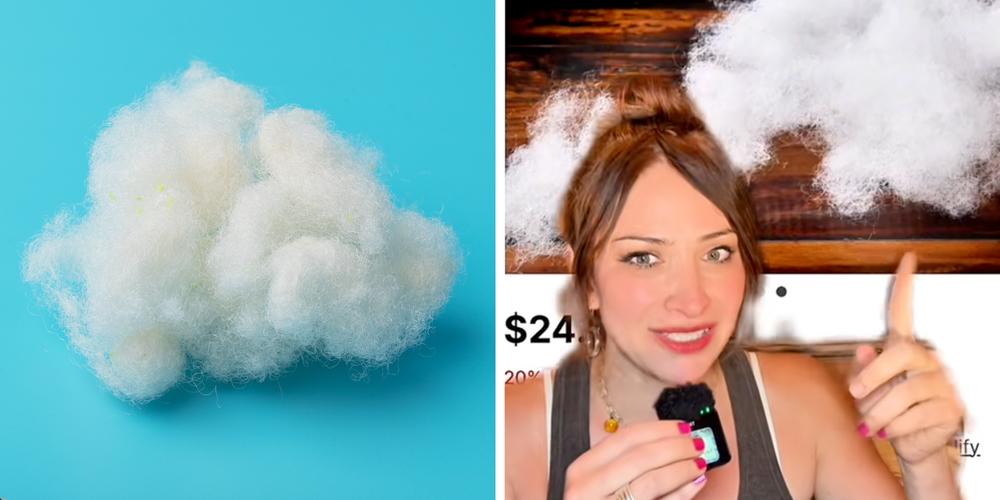Plastic is everywhere—woven into our clothes, wrapped around our food, even stuffed into our pillows.
Featured VideoWhile most of us already know about microplastics in oceans and single-use bottles, there’s one place they lurk that might surprise you: the fluffy filling inside everyday items.
Expert shares her thoughts on polyester fiberfill
TikTok user Beatrice (@antiplasticlady) posted a video explaining what she recently learned about polyester fiberfill—the synthetic stuffing inside countless pillows, comforters, and plush toys.
Advertisement“I was today years old when I found out how they made this,” she said. “This is gonna be probably like 90% of the pillows that are out there. It’s down alternative, and it’s crazy cheap, which is why it’s everywhere.”
She explained that finding studies on the toxicity of polyester fiberfill specifically was nearly impossible.
“There’s zero studies—zero studies—on whether or not the stuff specifically… is toxic,” she said. But she says there are studies on polyester in general, which is made from polyethylene terephthalate.
Beatrice then described the manufacturing process: “Basically, they make polyester fiber like they make cotton candy. They get it really hot, spin it, and stretch it out.”
Advertisement@antiplasticlady Replying to @moranco1111 polyester fiberfill is disgusting – another great reason to avoid it and just get wool pillows 🫠🤪 #microplastics #polyester #downalternative ♬ Debussy Arabesque – Isabelle Perrin
She claimed that heating plastic can make it leach toxic chemicals more easily. “Polyester has 806 toxic chemicals in it,” she added. She warns that the additives can still be loosely bound in the material even after cooling.
She went on to say that heating the fibers during production could also make microplastics shed more easily.
“Polyester microplastics… end up in the dust, damage your lungs, exacerbate respiratory diseases, and are potentially linked to cancer,” she said.
AdvertisementFor those looking to avoid polyester fiberfill, Beatrice suggested choosing natural materials like wool or cotton for items such as pillows and stuffed toys.
What the research says
Direct studies on polyester fiberfill are hard to find, as Beatrice said, but there’s plenty of evidence on PET microplastics—the same type shed from polyester fibers.
These particles turn up everywhere: in household dust, in the air, and even inside human tissue. Research has linked them to inflammation, oxidative stress, and immune system reactions.
AdvertisementCould the polyester fill inside of pillows and stuffed animals be harmful to humans? one5c describes microplastics as “bits 5 millimeters or smaller” that are “wee enough to be consumed by animals and humans,” so exposure to the fill could potentially prove harmful if studied in the future.
Some countries are already trying to address the problem. In France, for example, new rules require clothing labels to carry microfiber risk and recyclability information.
Shoppers can scan QR codes on tags to see exactly how a garment might impact the environment.
Responses on social media are mixed, and share a certain amount of hopelessness in terms of avoiding plastics in daily life.
Advertisement“I no longer can keep up with everything that’s toxic. I don’t care anymore. It’s very liberating,” a commenter wrote.
“OMGGGG I have a sleep sack this said 100% cotton but inside I read the tag and it’s filled with ‘polyester down’…” another said, adding, “definitely going back to the woolina sleep sack!”
“My dad makes furniture, so I grew up working with this material often… no wonder I’d always get intense hives all over my body,” a commenter wrote.
Advertisement
 Ukraine's long-range Flamingo cruise missile enters serial production, media reports
Ukraine's long-range Flamingo cruise missile enters serial production, media reports